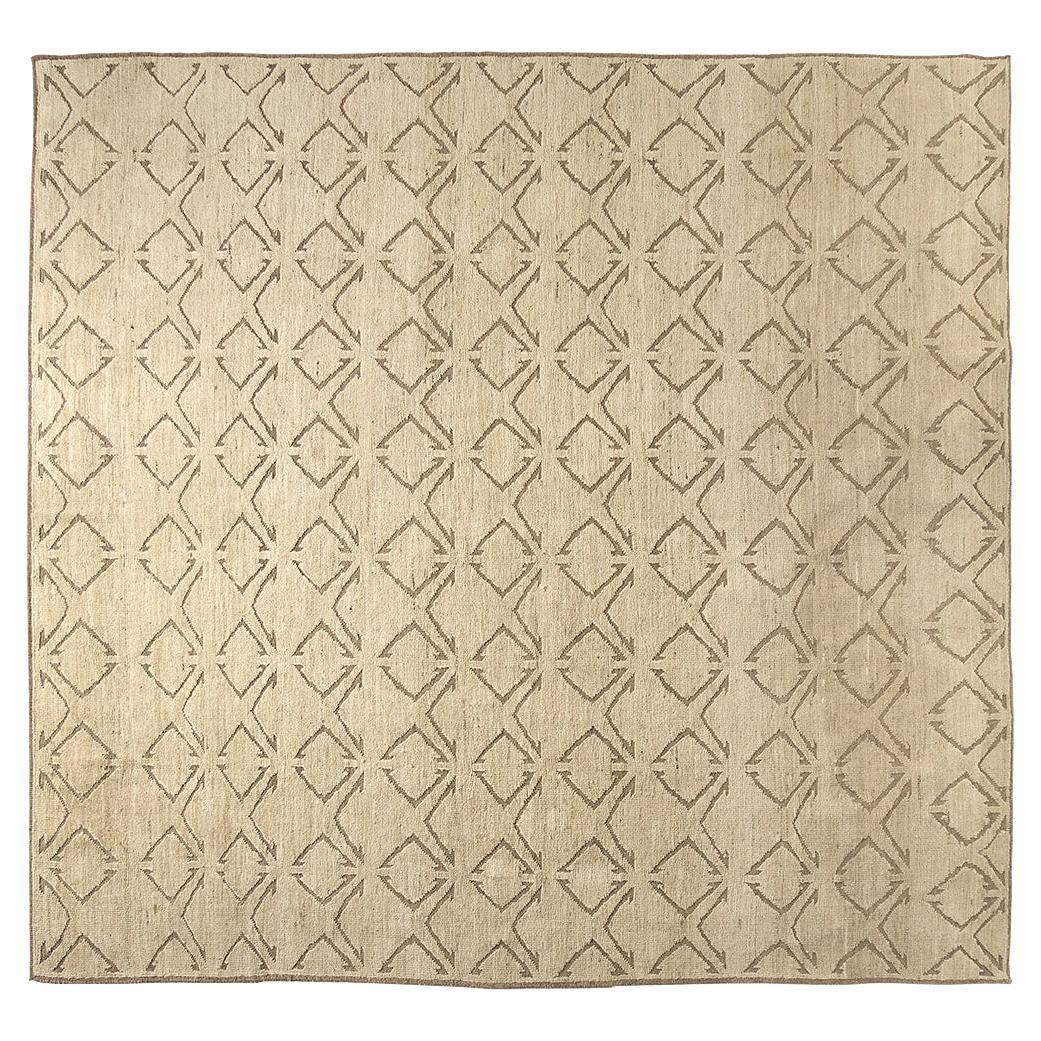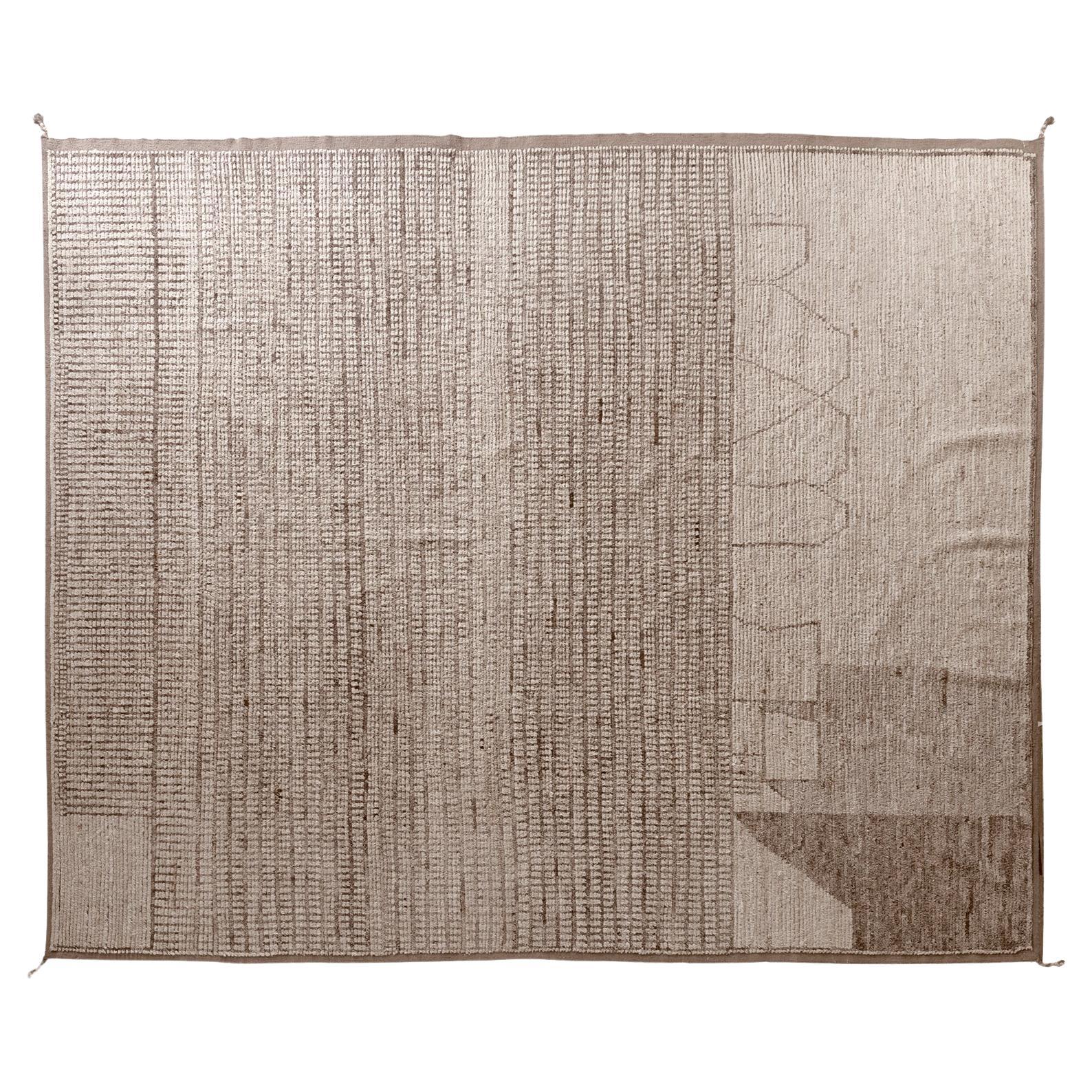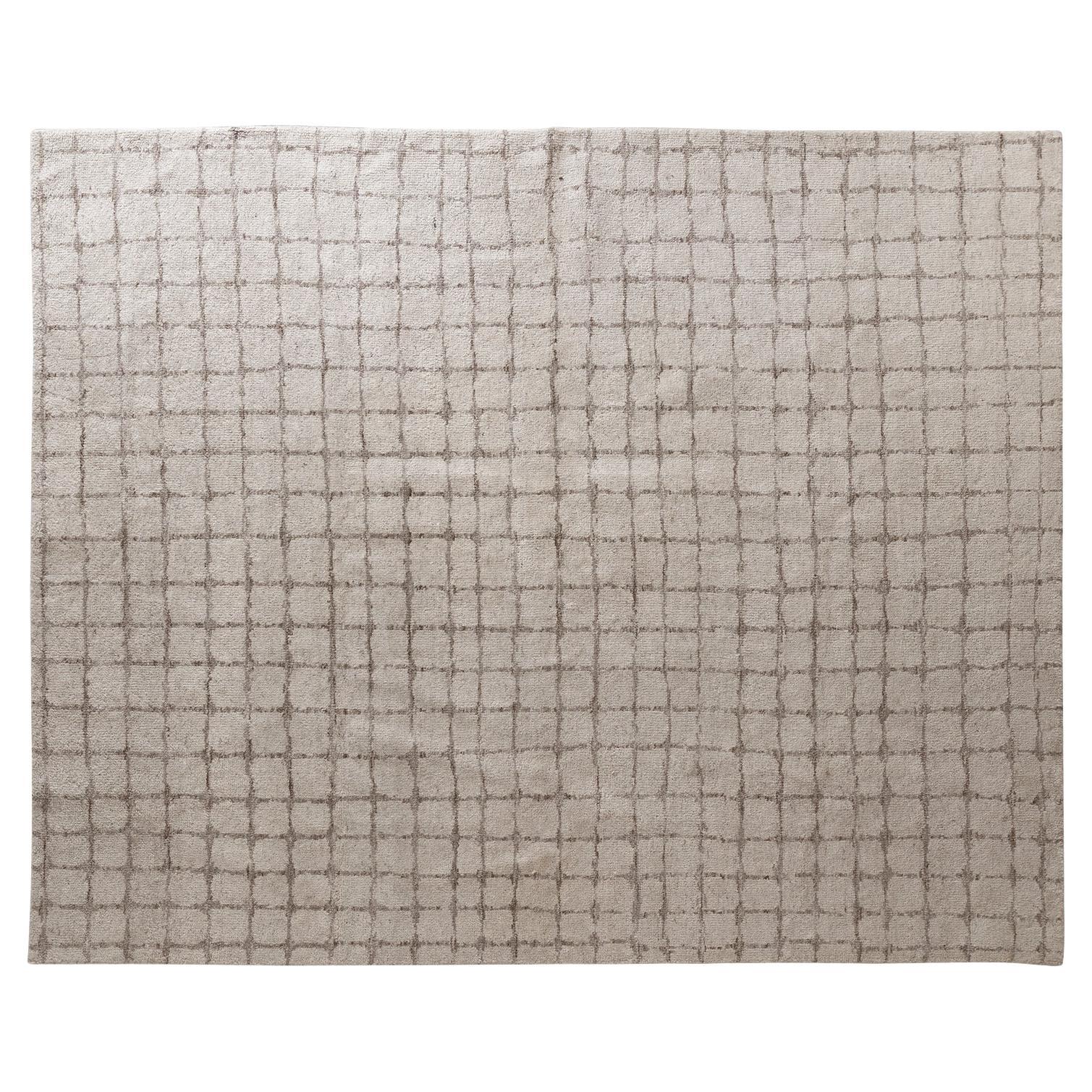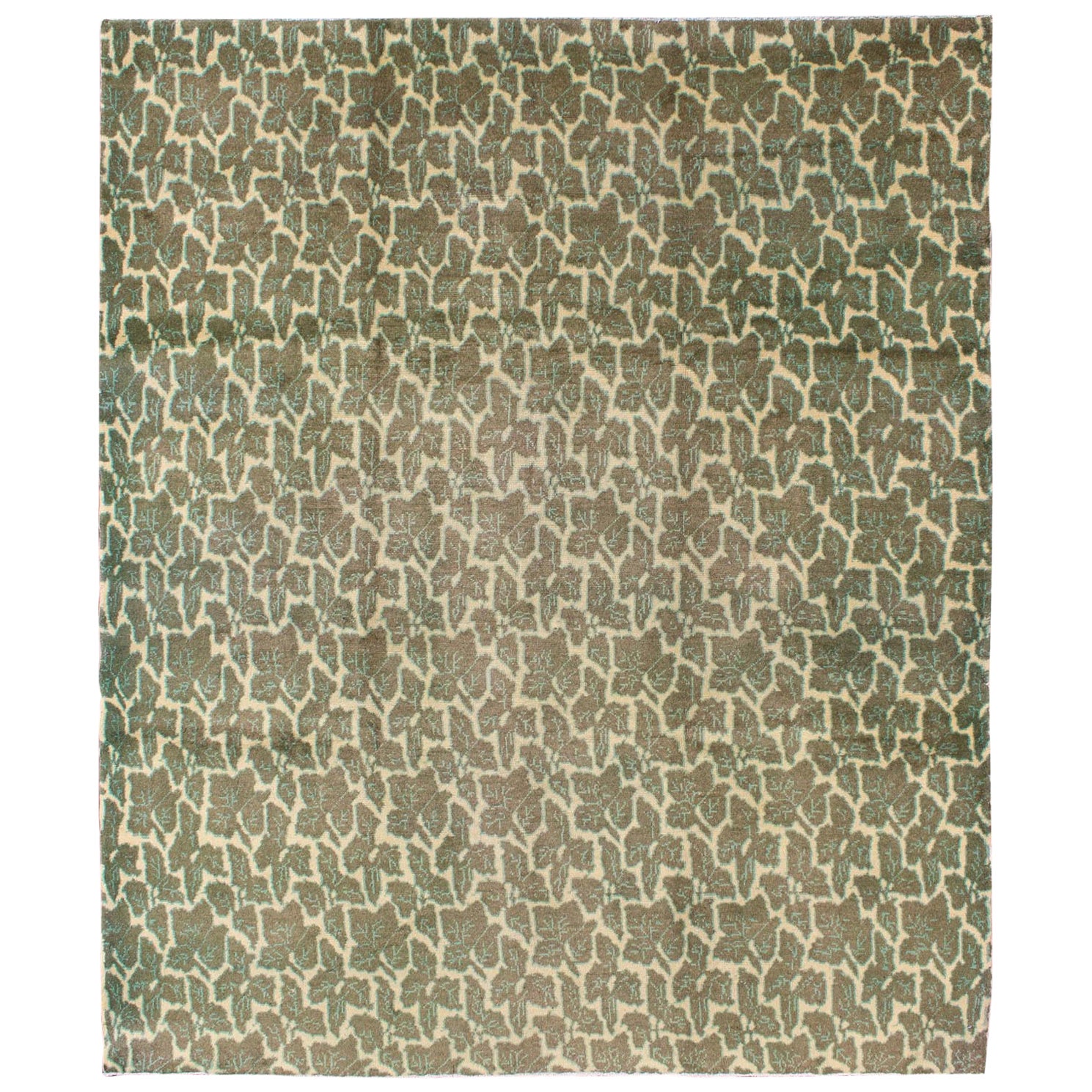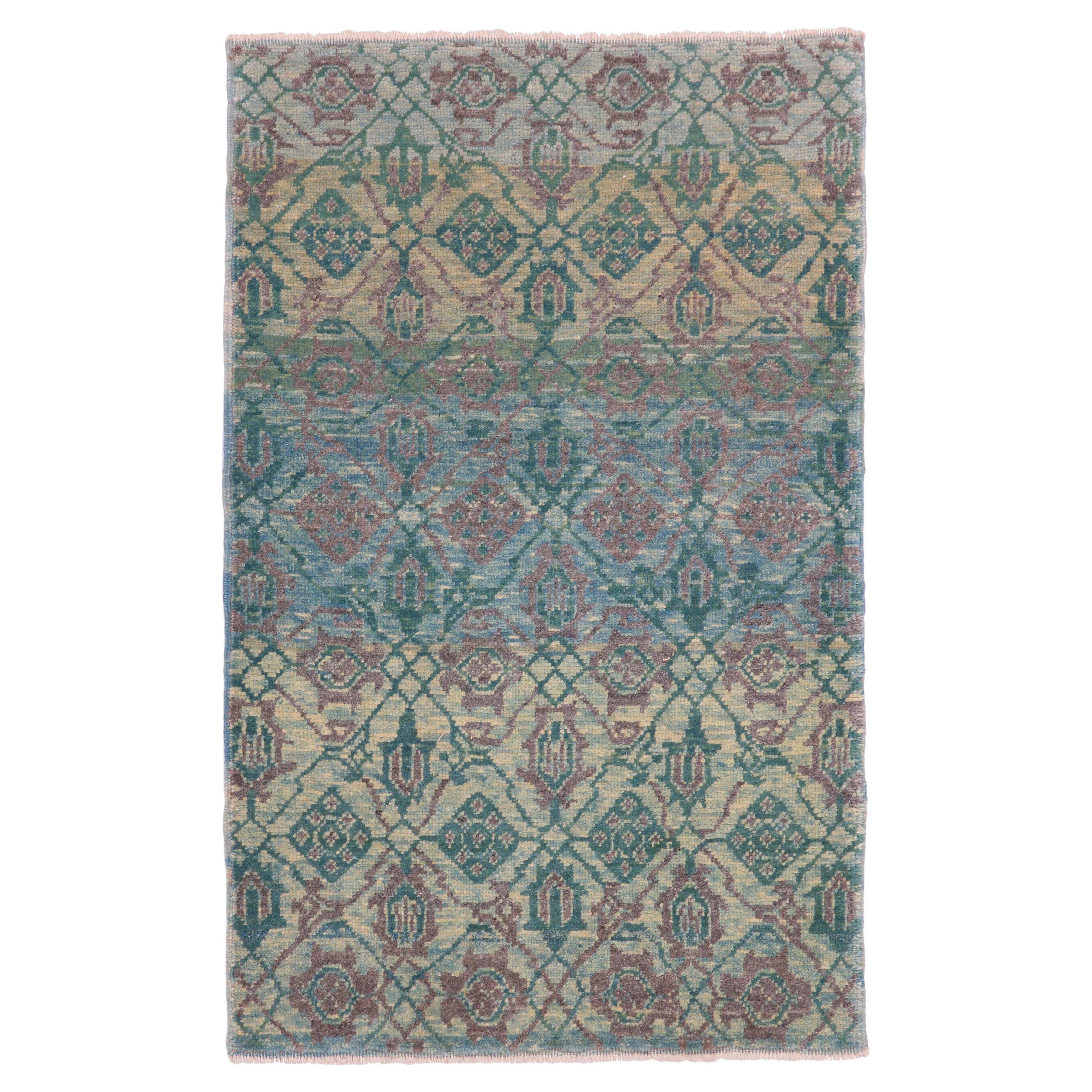Items Similar to Sisal Design Rug in Natural Pattern
Want more images or videos?
Request additional images or videos from the seller
1 of 7
Sisal Design Rug in Natural Pattern
About the Item
This piece is a part of Brendan Bass’s one-of-a-kind collection, Le Monde. French for “The World”, the Le Monde collection is made up of rare and hard to find pieces curated by Brendan from estate sales, brocantes, and anywhere beautiful pieces can be found. Pieces have been sourced from France, Italy, Netherlands, South east Asia, and far more.
Globally curated by Brendan Bass, Le Monde furniture and accessories offer modern sensibility, provincial construction, and unparalleled complexity. Showcasing found objects and handcrafted works from different cultures and regions. Our signature aesthetic blends global influences with traditional designs.
Please note that all listings are one-of-a-kind and are not able to be customized or duplicated. Refer to detailed imaging for the condition of the piece.
- Dimensions:Width: 105 in (266.7 cm)Length: 77 in (195.58 cm)
- Style:Organic Modern (In the Style Of)
- Materials and Techniques:
- Period:
- Date of Manufacture:unknown
- Condition:Wear consistent with age and use.
- Seller Location:Dallas, TX
- Reference Number:
About the Seller
4.8
Gold Seller
These expertly vetted sellers are highly rated and consistently exceed customer expectations.
Established in 1980
1stDibs seller since 2009
389 sales on 1stDibs
Typical response time: 11 hours
- ShippingRetrieving quote...Ships From: Dallas, TX
- Return PolicyA return for this item may be initiated within 3 days of delivery.
More From This SellerView All
- Organic Turkish Tulu Rug in Geometric PatternLocated in Dallas, TXThis piece is a part of Brendan Bass’s one-of-a-kind collection, Le Monde. French for “The World”, the Le Monde collection is made up of rare and hard to find pieces curated by Brend...Category
20th Century Organic Modern Turkish Rugs
MaterialsWool
- Hand Woven Turkish Tulu Rug in Taupe PatternLocated in Dallas, TXThis piece is a part of Brendan Bass’s one-of-a-kind collection, Le Monde. French for “The World”, the Le Monde collection is made up of rare and hard to find pieces curated by Brend...Category
20th Century Organic Modern Turkish Rugs
MaterialsWool
- Turkish Tulu Wool Rug in Neutral Grid PatternLocated in Dallas, TXThis piece is a part of Brendan Bass’s one-of-a-kind collection, Le Monde. French for “The World”, the Le Monde collection is made up of rare and hard to find pieces curated by Brend...Category
20th Century Organic Modern Turkish Rugs
MaterialsWool
- Turkish Tulu Rug in High Contrast Tribal DesignLocated in Dallas, TXThis piece is a part of Brendan Bass’s one-of-a-kind collection, Le Monde. French for “The World”, the Le Monde collection is made up of rare and hard to find pieces curated by Brend...Category
20th Century Organic Modern Turkish Rugs
MaterialsWool
- Contemporary Tulu Wool Rug in Modern Multi Tone DesignLocated in Dallas, TXThis piece is a part of Brendan Bass’s one-of-a-kind collection, Le Monde. French for “The World”, the Le Monde collection is made up of rare and hard to find pieces curated by Brend...Category
20th Century Organic Modern Turkish Rugs
MaterialsWool
- Turkish Tulu Rug in Multicolor Geometric DesignLocated in Dallas, TXThis piece is a part of Brendan Bass’s one-of-a-kind collection, Le Monde. French for “The World”, the Le Monde collection is made up of rare and hard to find pieces curated by Brend...Category
20th Century Mid-Century Modern Turkish Rugs
MaterialsWool
You May Also Like
- 1930's Antique Prayer Design Turkish rug in Colorful Geometric PatternLocated in Atlanta, GASquare Size 1930's antique Hand Knotted Prayer Design Turkish Carpet in Colorful Geometric Pattern. Measures: 3'6 x 4'8 Colorful Geometric antique Turkish prayer design Carpet. Kei...Category
Mid-20th Century Turkish Oushak Turkish Rugs
MaterialsWool
- Green Colored Leaf Pattern Vintage Rug with a Modern Design in Squared ShapeLocated in Atlanta, GAMeasurements: 7' x 8'8. Rendered in green and soft yellow tones with a leaf pattern, this mid-century patterned rug is unique in both color palette and design, rendering it a great ...Category
Mid-20th Century Turkish Mid-Century Modern Turkish Rugs
MaterialsWool
- Ararat Rugs Mamluk Wagireh Rug Lattice Pattern Revival Carpet Natural DyedBy Ararat RugsLocated in Tokyo, JPThis lattice pattern is composed of palmettes and leaves filling the various compartments against the imposing ground. One has the impression that it is only part of a larger scheme ...Category
21st Century and Contemporary Turkish Revival Turkish Rugs
MaterialsWool, Natural Fiber, Organic Material
- Ararat Rugs Mamluk Wagireh Rug Lattice Pattern Revival Carpet Natural DyedBy Ararat RugsLocated in Tokyo, JPThis lattice pattern is composed of palmettes and leaves filling the various compartments against the imposing ground. One has the impression that it is only part of a larger scheme ...Category
21st Century and Contemporary Turkish Revival Turkish Rugs
MaterialsWool, Natural Fiber, Organic Material
- Ararat Rugs Mamluk Wagireh Rug Lattice Pattern Revival Carpet Natural DyedBy Ararat RugsLocated in Tokyo, JPThis lattice pattern is composed of palmettes and leaves filling the various compartments against the imposing ground. One has the impression that it is only part of a larger scheme designed 15th-century rug from the Mamluk era, Cairo region, Eygpt. These designs have often been described as wagirehs or samplers and were said to have been used as weaver`s aids, or for demonstration purposes, made as a template or pattern for the carpet design and production of larger rugs, they are generally small pieces of the size of a scatter rug or mat. Mamluk carpets originated in a physical environment that lacked the combination of abundant marginal grazing land and a temperate climate with cool winters that were common to most carpet-weaving areas in the Islamic world. While related to a broader tradition of Turkish weaving centered in Anatolia, far to the north, the designs of these carpets include atypical elements, such as stylized papyrus plants, that are deeply rooted in Egyptian tradition. Their unusual composition and layout probably represent an attempt to develop a distinctive product that could in effect establish a “Mamluk brand” in the lucrative European export market. The uncharacteristic color scheme—devoid of the undyed white pile and employing a limited range of three or five hues in much the same value—also suggests a conscious attempt to create a particular stylistic identity. Also virtually unique in the world of Islamic carpets is the S-spun wool. It has been argued that the tradition of clockwise wool spinning originated in Egypt because of the earlier Egyptian tradition of spinning flax into linen thread. Details of the plant’s botanical structure make it impossible to spin flax fiber in the more common counterclockwise direction utilized throughout the Middle East for wool and cotton. Mamluk carpets with the color combinations seen in the Simonetti are now generally accepted as part of an earlier tradition that has many links to the weaving of Anatolia, Iran, and Syria. The “three-color” Mamluk carpets, well represented in the Metropolitan’s collection, represent a later development that continued well after the Ottoman conquest of Egypt in 1517. Many such carpets may have been produced well into the seventeenth century, and possibly even later. (Walter B. Denny in [Ekhtiar, Soucek, Canby, and Haidar 2011]). The design of the rug is interpreted by our designers from our Mamlouk-type rugs collection and soft colors are used for this rug. Color summary: 3 colors in total; Moss Green 27 (Spurge – Indigo) Mount Olive...Category
21st Century and Contemporary Turkish Revival Turkish Rugs
MaterialsWool, Natural Fiber, Organic Material
- Ararat Rugs Mamluk Wagireh Rug Lattice Pattern Revival Carpet Natural DyedBy Ararat RugsLocated in Tokyo, JPThis lattice pattern is composed of palmettes and leaves filling the various compartments against the imposing ground. One has the impression that it is only part of a larger scheme designed 15th century rug from the Mamluk era, Cairo region, Eygpt. These designs have often been described as wagirehs or samplers and were said to have been used as weaver`s aids, or for demonstration purposes, made as a template or pattern for the carpet design and production of larger rugs, they are generally small pieces of the Size of a scatter rug or mat. Mamluk carpets originated in a physical environment that lacked the combination of abundant marginal grazing land and a temperate climate with cool winters that were common to most carpet-weaving areas in the Islamic world. While related to a broader tradition of Turkish weaving centered in Anatolia, far to the north, the designs of these carpets include atypical elements, such as stylized papyrus plants, that are deeply rooted in Egyptian tradition. Their unusual composition and layout probably represent an attempt to develop a distinctive product that could in effect establish a “Mamluk brand” in the lucrative European export market. The uncharacteristic color scheme—devoid of the undyed white pile and employing a limited range of three or five hues in much the same value—also suggests a conscious attempt to create a particular stylistic identity. Also virtually unique in the world of Islamic carpets is the S-spun wool. It has been argued that the tradition of clockwise wool spinning originated in Egypt because of the earlier Egyptian tradition of spinning flax into linen thread. Details of the plant’s botanical structure make it impossible to spin flax fiber in the more common counterclockwise direction utilized throughout the Middle East for wool and cotton. Mamluk carpets with the color combinations seen in the Simonetti are now generally accepted as part of an earlier tradition that has many links to the weaving of Anatolia, Iran, and Syria. The “three-color” Mamluk carpets, well represented in the Metropolitan’s collection, represent a later development that continued well after the Ottoman conquest of Egypt in 1517. Many such carpets may have been produced well into the seventeenth century, and possibly even later. (Walter B. Denny in [Ekhtiar, Soucek, Canby, and Haidar 2011]). The design of the rug is interpreted by our designers from our Mamlouk-type rugs collection and soft colors are used for this rug. Color summary: 3 colors in total; Moss Green 27 (Spurge – Indigo) Feldgrau 340 (Spurge – Madder Root – Indigo – Walnut Husk) Mount Olive...Category
21st Century and Contemporary Turkish Revival Turkish Rugs
MaterialsWool, Natural Fiber, Organic Material
